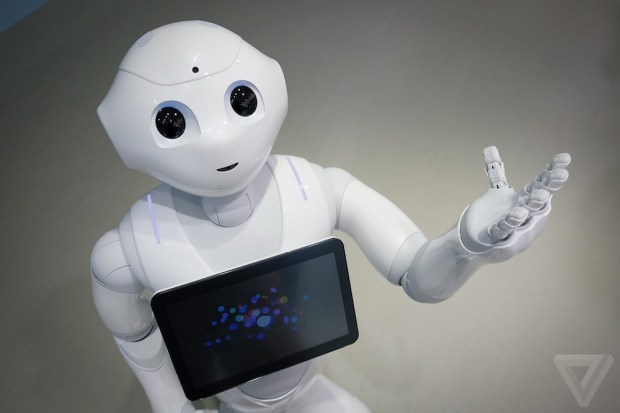Pepper The Robot Is Going To Work – At SoftBank

Pepper, a rather adorable humanoid robot, is being put to work by his bosses at SoftBank. The Japanese internet group — founded by Masayoshi Son — has already sold about 10,000 of the robots, mostly to futurists and lovers of novelty.
“In the first phase, customers were more like vision dreamers,” said Kenichi Yoshida, who has been leading SoftBank’s robotics project since its initiation. “Now we are shifting to real customers…and also want a return on investment.”
So Pepper — in its 4-ft androgynous glory — is being trained to get to work in sales, marketing and customer services. Things, SoftBank thinks, don’t quite need a human touch so much as they need a slightly more sophisticated automation than what is currently on offer.
SoftBank is not alone in embracing the robot worker — Nestlé has a whole fleet of Peppers in stores to sell Nescafé coffee-making machines. Drug maker Eli Lilly is working with SoftBank to try and use Pepper to screen for possible osteoporosis-related bone fractures by questioning hospital visitors. Consumers should see that service launch in the spring. Pepper can also take payment at Pizza Hut — with an assist from Mastercard — and if one happens to be in Taipei, where it is being piloted.
Business to business “is the first place where we can make an ROI [return on investment] business case, because it’s still expensive for consumers to purchase,” said Mr Yoshida. “At $10,000 for a three-year contract, it’s like a small car. But for B2B, it’s around $500 a month to lease and much cheaper than hiring people, so it makes sense.”
Still, not everyone agrees that the workforce is a natural fit for Pepper.
“I’m not convinced people prefer to go to a robot rather than a human,” noted Morten Paulsen, industrials analyst at CLSA. “And from what I’ve seen, Pepper is still struggling a lot with understanding, so I think a lot more work needs to be done.”
Mr Yoshida also noted that Pepper could be applied to healthcare for autistic children, and Alzheimer’s patients who, he said, tended to exercise better with robots than with human instructors.
“By connecting with cognitive artificial intelligence, Pepper can be the doctor, the lawyer,” Mr Yoshida said. More prosaically, he can connect to queues and explain waiting times on his screen.
